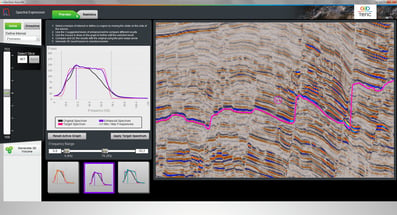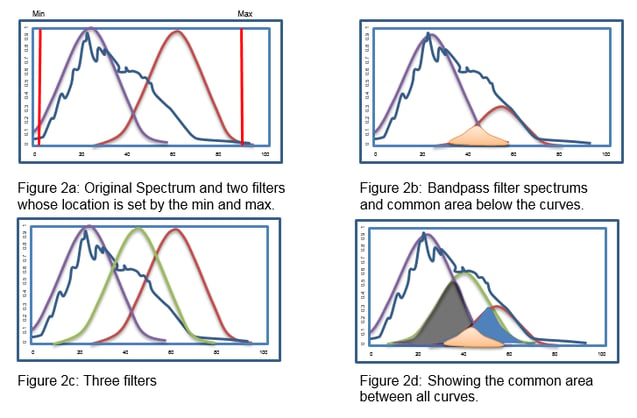GeoTeric 2015 contains our latest Geological Expression tool- Spectral Expression.
Spectral Expression is a data driven, interpreter guided spectral shaping tool that can help you to optimise the resolution of your data.
It offers a quick and easy comparison of different enhancement options and as with all the example driven tools it's easy to navigate through different areas of the data to see what the results will be. the The tool also includes q
uantitative feedback so you know how the data has changed.
With Spectral Expression the spectrum can be reshaped by decomposing the original data into individual frequency bins and then, with balanced weighting, selectively adding these frequencies back with the original.
Spectral Expression relies on two key concepts
- being able to automatically determine the optimal number of frequencies, which we will cover in this blog post.
- capability to determine the frequency weights required to shape the data to a target spectrum- which we will cover in a later blog post.
How does it determine optimum number of frequencies?
The optimum number of frequencies is determined by comparing the common area under the bandpass filtered spectrum (curves).
Starting with two frequencies (min, max) additional frequencies are added until the correlation between bandpass filtered spectrum is sufficiently high. In other words additional frequencies are added until adding more frequencies will not gain us any additional information. Mathematically it looks at the ratio between the total area under each curve and the intersected area ensuring it is above a pre-determined threshold based on eigen analysis of the correlation matrix of the filters. Going below the threshold means we would add in redundant frequency information which won't give us any benefit but would be more computationally expensive. See figure 2 below.
The target spectrum set by the user does not affect the number of frequencies used.



